Whenever the Open Championship is contested at Royal Portrush’s Dunluce Links, the eyes of the golfing world shift to Northern Ireland. Everyone who watches the event comes away saying, “I’ve got to play there someday.” And play there, you should.
Like its neighbor to the southeast, the Championship course at Royal County Down, it’s a bucket-list course that’s well worth the admittedly lofty price of admission. But there’s much more to Northern Ireland’s heralded course menu than its two most famous Royals. It’s blessed with several other outstanding but lesser-known courses, both links gems and scenic parkland tracks at members’ clubs that are only too happy to share their home courses with visitors. You could genuinely plan a week’s trip to the area and experience great golf of several varieties without ever setting foot on the marquee courses.
Here’s a list of some of those terrific “other” courses for consideration. Each of them promises a memorable, challenging day of golf, with those legendarily warm Irish welcomes thrown into the bargain.
Royal Portrush Golf Club, Valley Course—Portrush
It would be a mistake of the highest order to venture to Portrush, play the Dunluce Course, and leave without teeing it up next door at the club’s 6,524-yard, par-71 Valley course—especially now. Over the past decade, and the last 20 months in particular, the club has made significant changes to the course that make it even more of a must-play. What has long been a favorite of locals and links aficionados is now, thanks to those Martin Ebert design updates, even stronger, with more length, more bunkers, and routing changes that include the creation of a fun new par-three 6th hole. Players will not soon forget the new infinity green at the 7th hole overlooking the sea, or the many other holes whose tumbling fairways wind through grass-covered dunes and make each seem like its own private sanctuary. If the Dunluce didn’t exist, people would still trek from near and far to enjoy the Valley, and you should, too.
Royal County Down, Annesley Links—Newcastle
Though it sits in the shadow of its illustrious Championship Course neighbor, the Annesley Links at Royal County Down offers exhilarating golf in its own right. It may be a step down from its big brother in terms of length, but it’s certainly not from an enjoyment or skills challenge standpoint. Named for Lord Annesley, whose eponymous estate granted permission for Royal County Down Golf Club to initially use the land known as the Warren for golf, it features the same dramatic dunescape and captivating views of the Mourne Mountains and Irish Sea as the famed Championship Course. Originally an Old Tom Morris design, this par-66, 4,548-yard links gem was modified through the years by Harry Colt, Donald Steel, and most recently in 2015 by Mackenzie & Ebert, who, amongst other changes, created some new holes that are routed around a towering dune and offer captivating views of the sea. Don’t let its shortness fool you—this course is no pushover and offers great moments throughout. As a warm-up round before taking on the big course, or an afternoon round once you’ve done battle with its brawnier sibling, it makes for a great 36-hole day.
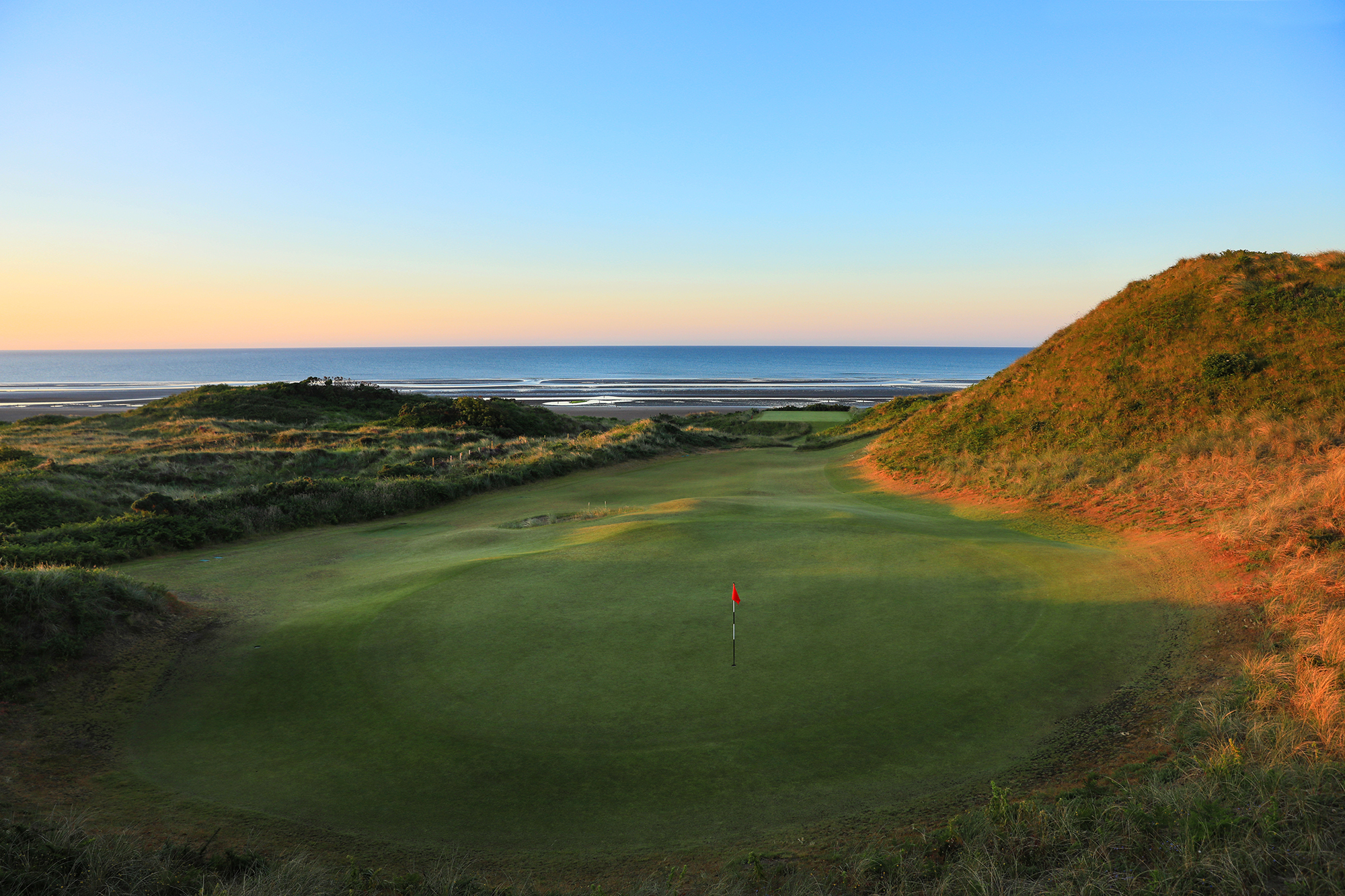
Castlerock Golf Club, Mussenden Links—Castlerock
If you travel west along the shore from Royal Portrush, you’ll soon come to Castlerock, home to Castlerock Golf Club and its estimable Mussenden Links. Named for a nearby 18th century temple, it opened for play in 1901, and the 6,767-yard, par-73 course you’ll play today is a classic links (updated by Martin Hawtree) with 18 very different and entirely memorable holes. It’s a course with all the features you expect to see on a great links: fast fairways, deep rough, devilishly quick greens, cavernous pot bunkers, holes that dance amongst the dunes, and even a railway line skirting the 4th and 5th holes. The short 6th hole throws a burn at you, and it’s followed by the course’s No. 1 handicap hole, a perilously long par four, and hole 8, a double-dogleg two-shotter to a green hugged by dunes. Things open up a bit on the back nine until you get to the closing holes, where the dunes close in again. From start to finish, it’s rollicking good fun, and a course you’ll absolutely want to play more than once.

Castlerock Golf Club, Bann Course—Castlerock
We can’t leave Castlerock without encouraging you to extend your day and take on the club’s brilliant, 9-hole Bann Course. This “wee” course’s total yardage is just 2,446 yards, but there’s a 491-yard par five in the mix, and five par fours—each of which presents the kinds of challenges that make links golf so exhilarating. You may be tempted to drive the green on some of its shorter par fours, but beware: the greens are not large. Some could be called minuscule. But man, are they fun. The narrow ribbon green at the short 3rd hole, the benched green at the 4th, and the mostly hidden green at the par-three 9th are just a few examples of why you need to play this course strategically and hit your approach shots from the right spots. If you don’t, your short game will get the test of its life. Once again, you’re in the dunes here. And when you come out, I guarantee you’ll do so with a smile on your face, no matter what number is on your scorecard.
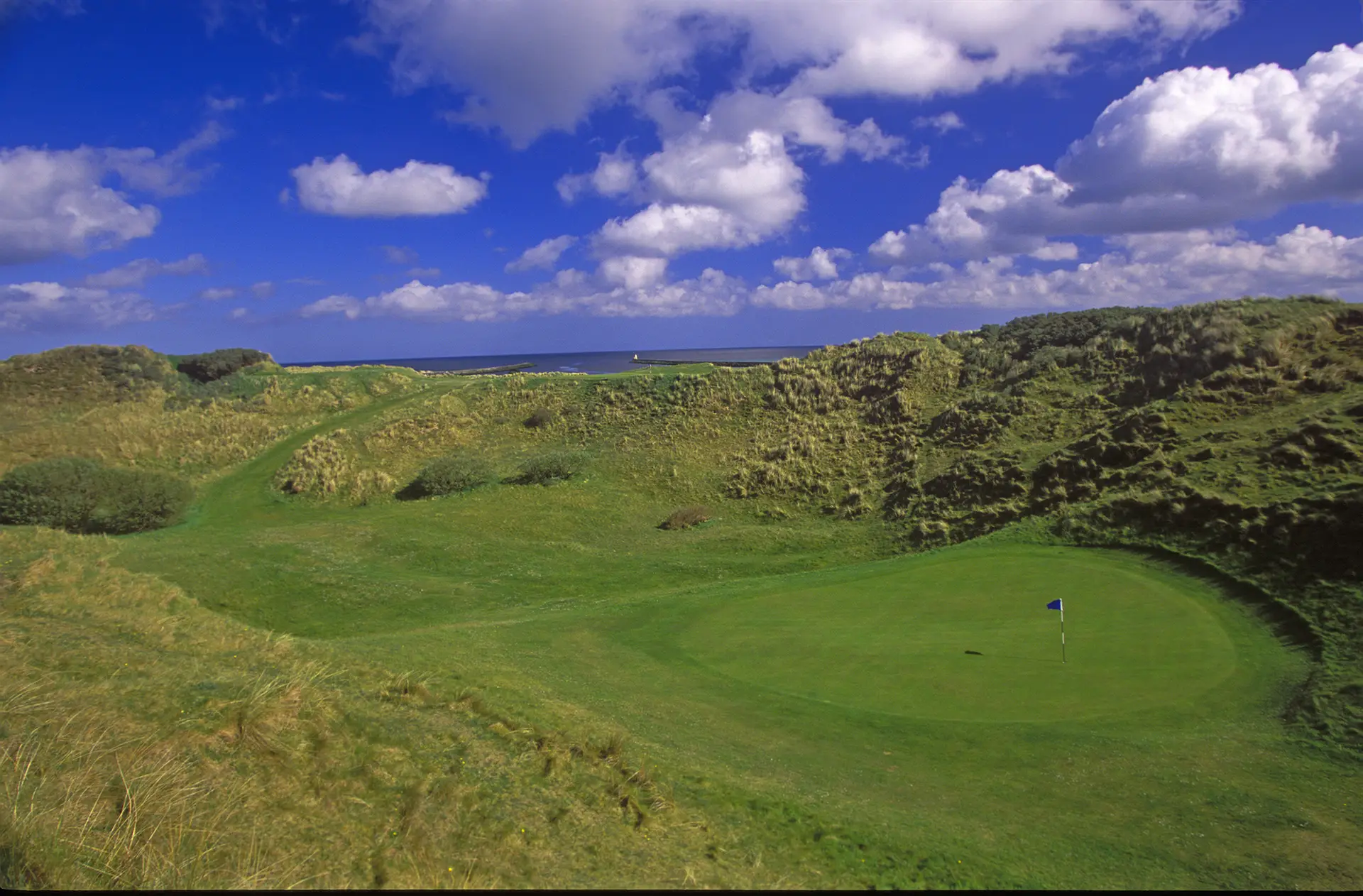
Malone Golf Club—Dunmurry
Located just south of Belfast in the Lagan Valley, Malone has been labeled by many as Northern Ireland’s best parkland course (an honor that would undoubtedly be hotly debated in 19th holes). But there’s no doubt that it’s a strong test on an expansive site, with thoughtful if not overly dramatic hole and green designs, mature hardwood trees everywhere, and a very large lake called Ballydrain that the course wraps around like a scarf. There are three nines here, with many holes that play right to the edge of the lake, which comes into play more frequently than you may like. The 6,780-yard, par-71 championship course is comprised of the Drumbridge and Ballydrain nines and includes no less than six par fours measuring over 400 yards. The signature hole is the par-three 15th, which calls for a do-or-die tee shot over a corner of the lake to a peninsula green, but in truth the course’s other par threes are just as strong. Visitors will love the variety of challenges here, and especially the finishing hole, an undulating, 423-yard par four that calls for a drive over the edge of the lake and a long approach shot to a testing green with a runoff on the right.
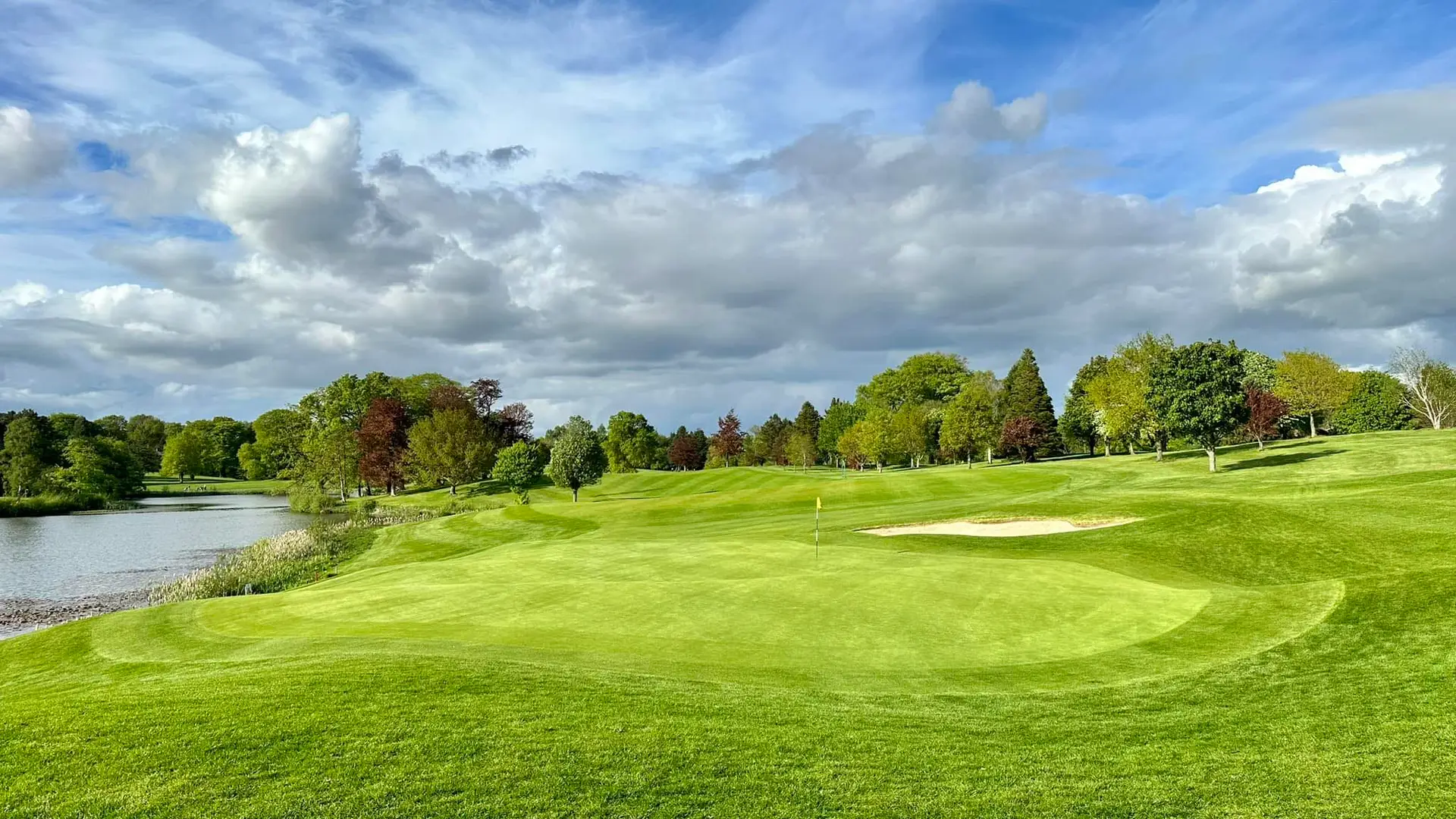
Belvoir Park Golf Club—Newtownbreda
Another contender for best parkland course in Northern Ireland, Belvoir Park is a Belfast-area Harry Colt design dating back to 1927. The par-71, 6,460-yard course has been updated from Colt’s original design by Martin Hawtree, and its fir trees, oaks, beeches, and chestnuts have grown considerably since Colt initially routed the course through them (with many new trees planted, as well). But everything you expect from a great Colt design is still here: a mix of holes that twist and turn up, down, and sideways with elevated greens that are beautifully bunkered and rife with undulations that never cease to confound your putting game. Colt was a master of the par three, and that’s very much in evidence here, with long specimens whose mischievously placed bunkers and vexing greens are bogeys waiting to happen. The course’s unforgettable par-four 12th hole, one of several downhill-then-uphill holes at Belvoir Park, will test the best of players, as it calls for a long, uphill approach shot from a downhill lie to a green that’s as hard to hold as it is to hit. The course has hosted the Irish Open, and if it were in the U.S., it’s the kind of course the USGA would undoubtedly consider for championship use, too.
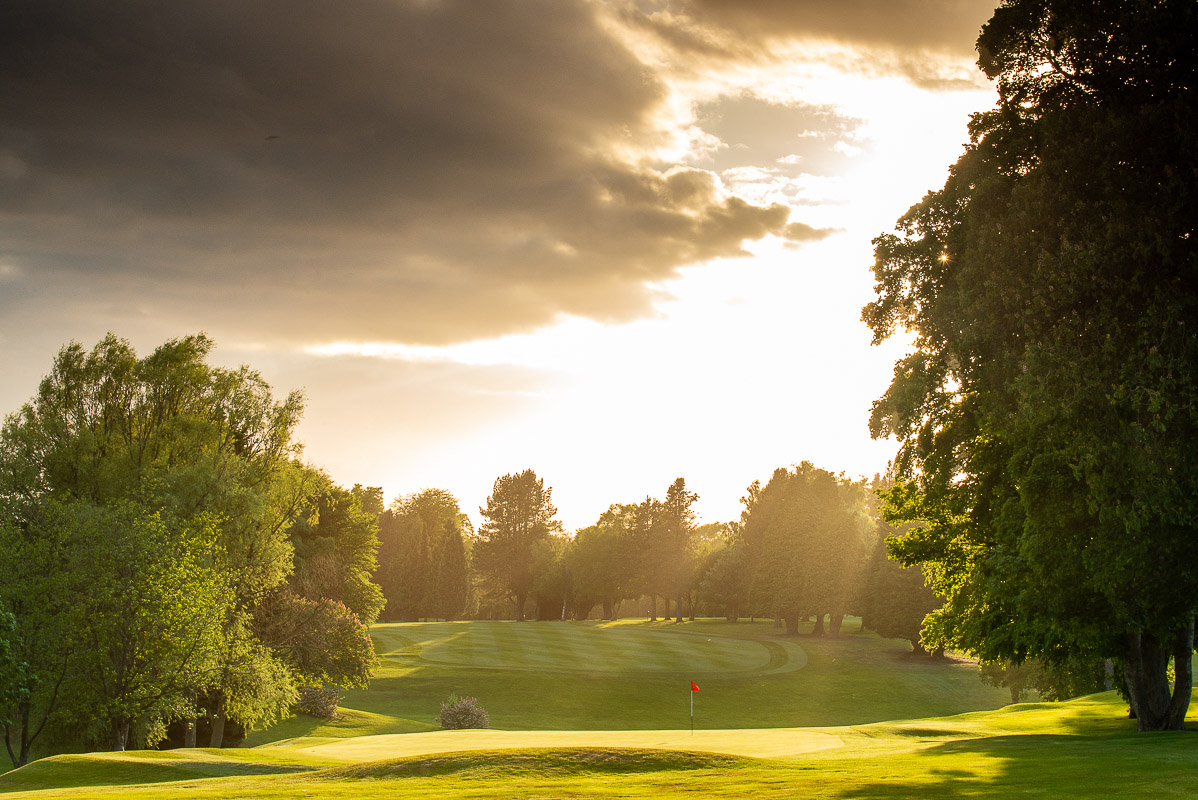
Rockmount Golf Club—Carryduff
Northern Irish golf legend Darren Clarke hit the opening tee shot when this 6,410-yard, Carryduff-area course opened in 1995, and it’s been a popular choice of locals and visitors ever since. On what had previously been rolling farmland, players now enjoy firm parkland conditions, with holes that wind through tree-lined corridors to well-protected greens that become even slipperier in the summer months. There’s just enough slope and elevation change to make things interesting, as evidenced early-on at the winding, uphill, par-five 2nd hole. Several holes are squeezed by water hazards, like the pond guarding the front of the green at the testy par-four 11th, and the stream that will punish anything hit short or right at the short but devilish par-three 9th, which has a two-tiered, sloping green to make walking off with par even harder.
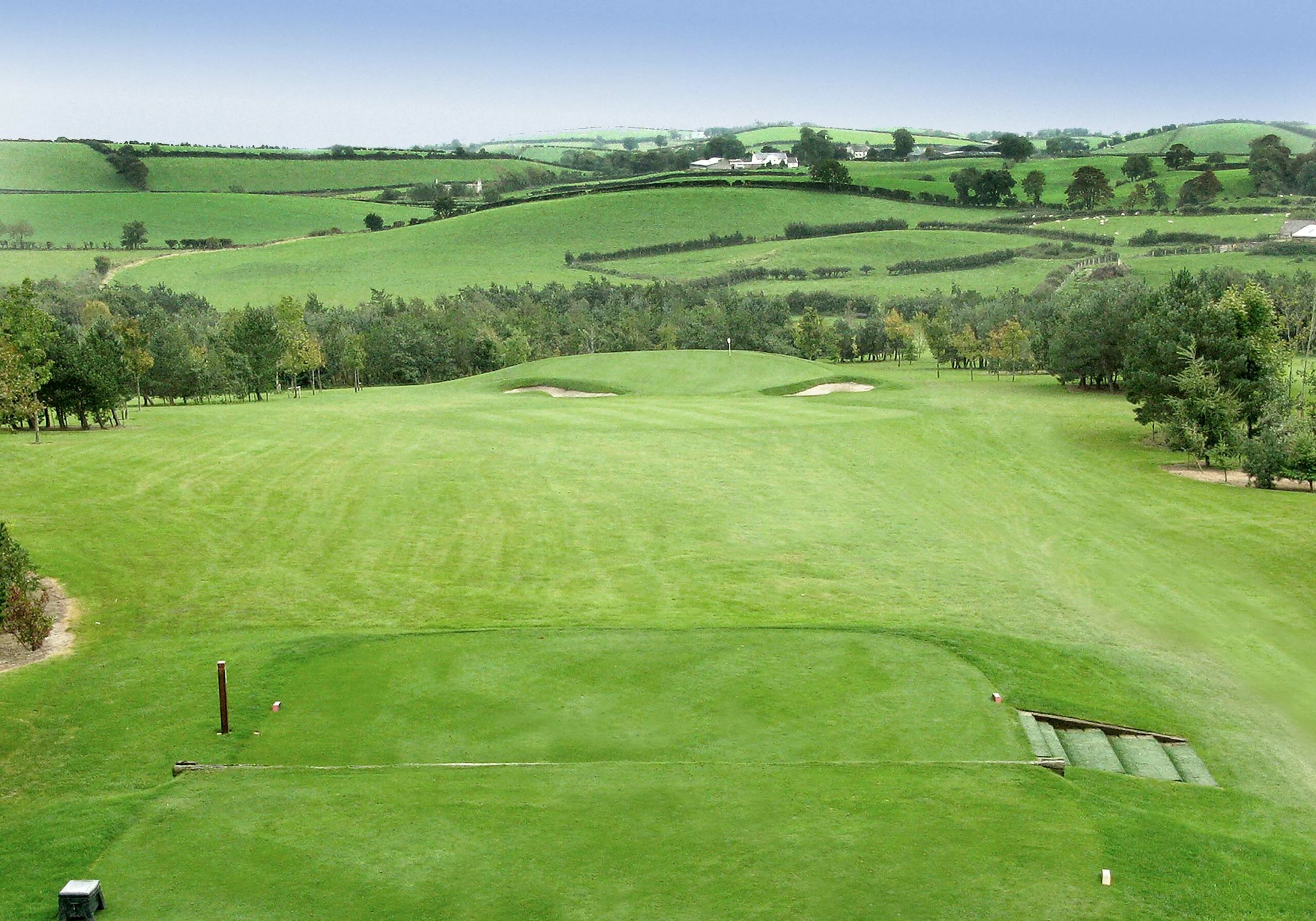
Scrabo Golf Club—Newtownards
Founded in 1909, Scrabo occupies a lofty setting that’s high above Newtownards overlooking Strangford Lough—and that’s overlooked itself by the famous Scrabo Tower, an impressive stone tower built to honor the 3rd Marquis of Londonderry. The 6,227-yard, par-71 design conjures up links golf, heathland golf, and parkland golf in one terrific 18-hole package, with lots (and lots and lots) of ball-hungry gorse, fast-running and well-draining turf, and few shots that won’t call for careful club selection due to the near-constant elevation changes. The opening and closing holes tell you all you need to know: the 459-yard par-four first hole, “Giant’s Chair,” plays straight uphill, then through a sea of gorse, to a tiny green set just below the tower; the 289-yard, par-four finisher, “Rocky Gap,” plays much shorter but calls a blind tee shot up and over a rocky escarpment, followed by a precise, downhill wedge shot to a small green just steps from the clubhouse.
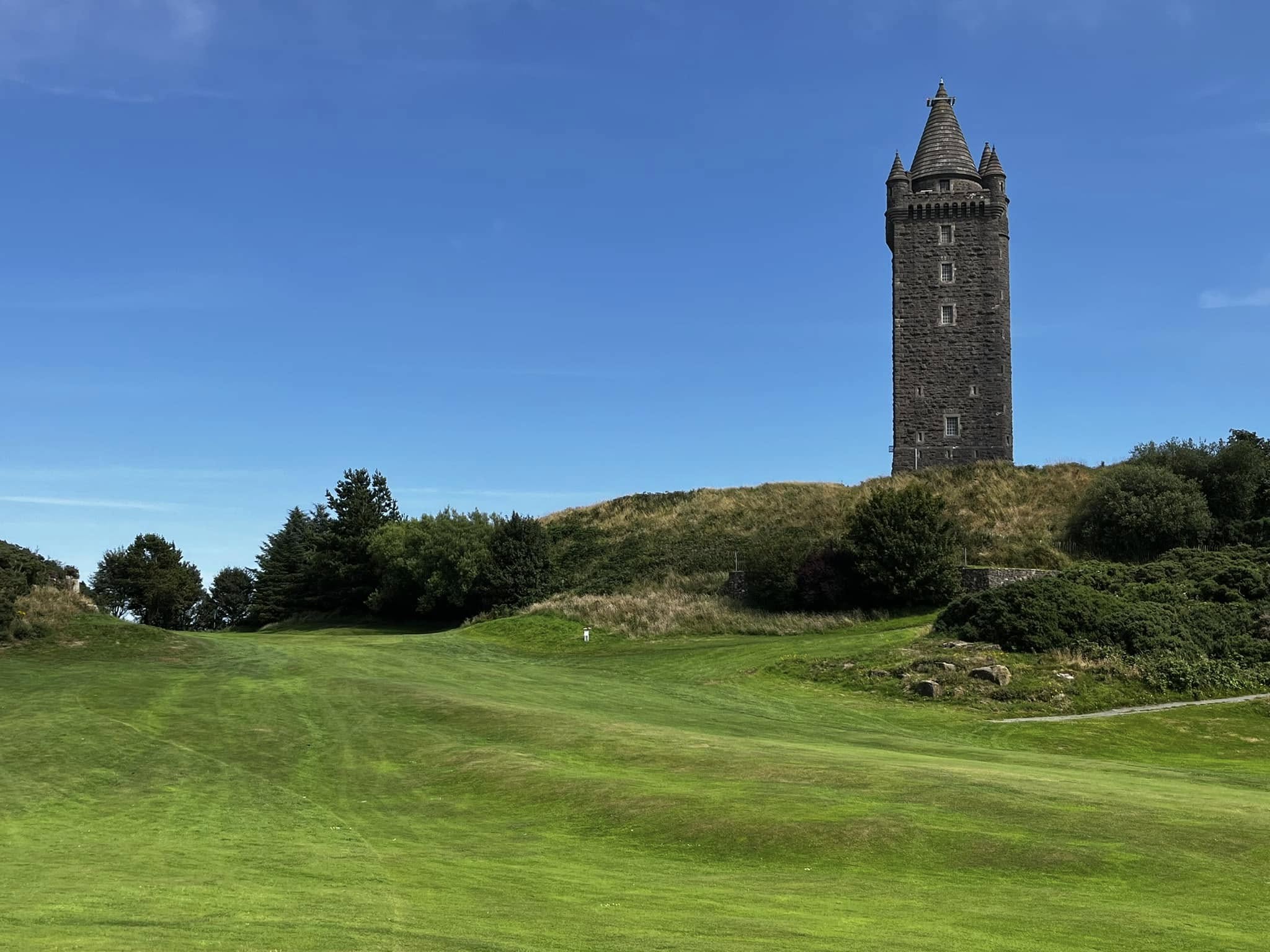
Holywood Golf Club—Holywood
While you’re in Northern Ireland, don’t miss the chance to play the course where it all began for Rory McIlroy—if only to see the Rory memorabilia proudly displayed by the club there. Holywood sits high on the sweeping hillside above Belfast Lough, and offers spectacular views of the lough and countryside. Sloping holes and uneven lies are common here—as are elevation changes that can make club selection tricky. The par-70 course tips out at just over 6,000 yards, so it won’t test grown-up Rory’s game. But the way the trees pinch fairways, as at the closing par-four hole, and the way the strategically placed bunkers hem in greens, especially at the uphill, par-three 9th with its two-tiered putting surface, mean that accuracy is key at Holywood. McIlroy provides a “Pro Tip” for each hole on the course’s website; be sure to memorize them before taking on his home course.
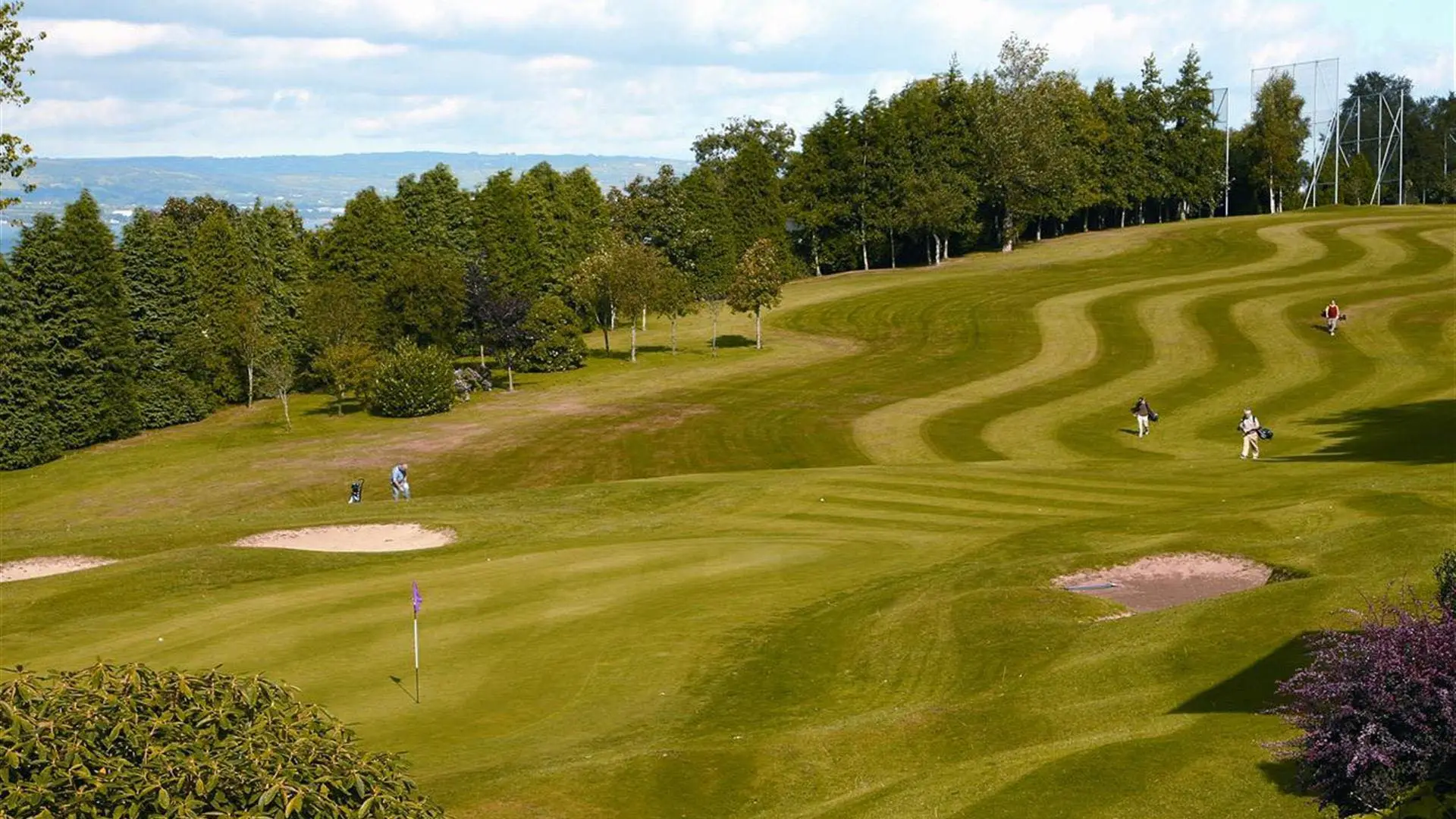



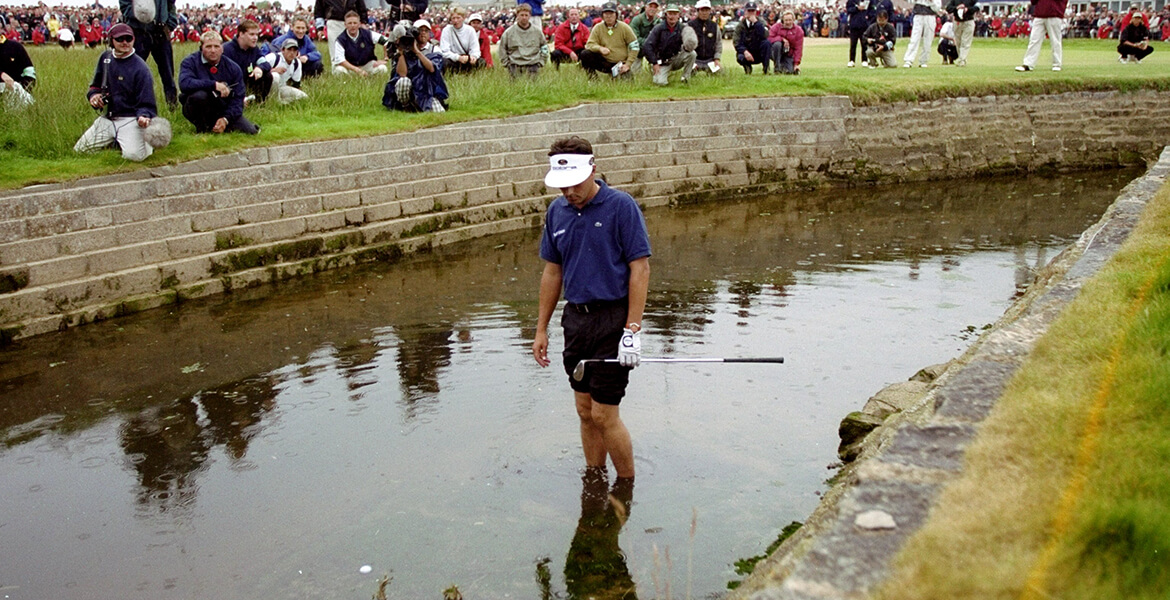
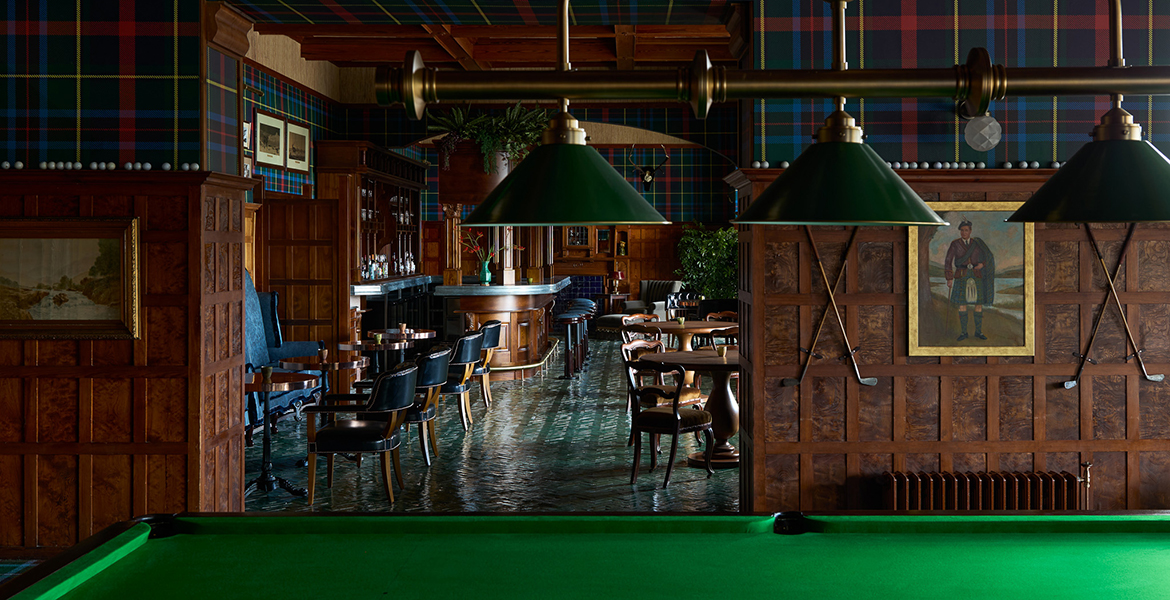

You left out Portstewart Strand Course and Ardglass!!
Those two were part of our “Best of” golf in Northern Ireland, as opposed to the “Lesser-Knowns”: https://linksmagazine.com/northern-ireland-best-golf-courses/
I don’t know how an article that is titled “under-the-radar golf courses” can include one of the most famous, highest rated and well-known golf courses in the world – Royal County Down. And then not include Portstewart, Ardglass or Ballycastle which are truly under the radar
Correction, I just noticed that you were writing about the second course at Royal County Down
totally agree. haven’t seen ballycastle, but portstewart and ardglass are great links courses.
I second Ardglass…
I third it….
Delta cost us playing Ardglass, by delaying us our connection to Boston on 5 23 24. No flights offered for 2 days. Ireland is so special to play golf. Portstewart,Rosapenna and Ballyliffin were also really memorable
Scrabo has to be played to be believed. Several holes cross right over other fairways, and a couple of holes are so bling you’ll cry! Enormous fun